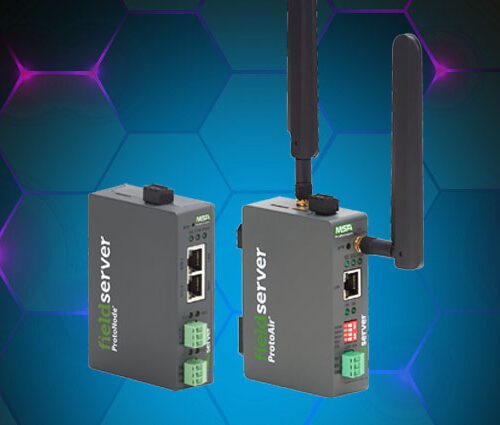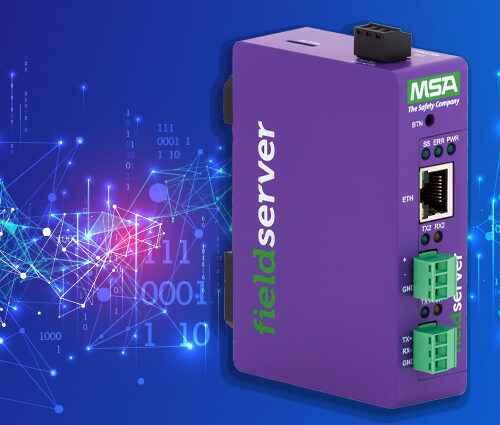
Equipment manufacturers in building automation, industrial controls, energy management, and life safety are often caught in a paradox. Customer projects demand it all: support for legacy serial protocols, cloud-ready architectures, and everything in between. One project calls for Modbus support, another BACnet/IP with BTL Compliance, and others requiring wireless, firewall technology, and secure cloud integration.
The challenge isn’t in the ask. It’s that every new variation brings added design work, production hurdles, and ongoing support demands. Multiply that across product lines and customer segments, and the result is a flood of hardware options that overwhelm engineering teams, stretch development and launch timelines, and drive costs up.
And though building connectivity into equipment is the simple answer, it’s not the easy one.
The question is: How can OEMs build connectivity into their equipment and machines while also preserving performance, compliance, and customer trust?
Embedded Options Built for OEM Demands
OEMs don’t benefit from hardware options created for the sake of variety. What they need are solutions versatile enough to cover a wide range of customer requirements, yet consistent enough to manage efficiently.
That’s where MSA FieldServer hardware can make a difference. With platforms designed to minimize complexity without limiting choice, FieldServer devices enable OEMs to deliver the options customers demand without overwhelming engineering teams.
ProtoNode: A Flexible External Gateway
ProtoNode is designed for OEMs that need broad connectivity in a compact form. As an integrated solution, ProtoNode delivers flexibility without adding visible complexity or requiring redesigns for every new customer request:
- Support for multiple protocols across building automation, industrial, and cloud environments.
- Built-in Device Profiles to help reduce field configuration time.
- Single or Dual Ethernet ports for redundancy or segmentation.
- Optional Wi-Fi connectivity.
- A small footprint for seamless integration into equipment designs.
- Full BTL compliance and certification.
Embedded Gateway Solutions
FieldServer gateways help OEMs accelerate time to market, reduce engineering costs, and minimize risk through pre-tested, plug-and-play solutions.
For applications where an internal module is a better fit, MSA offers ProtoCessor board-level solutions. ProtoCessor offers the lowest cost solution for embedding broad Serial and Ethernet protocols:
- Native support for BACnet MS/TP and BACnet/IP protocols (plus most popular field protocols).
- BTL testing reports/compliance.
- LonWorks network support.
- Integrated OEM Device Profiles.
- TTL interface for easy UART/Controller board connectivity.
- Ongoing protocol updates and Device Profile revisions.
Consolidating Variations Without Compromising Choice
Variation isn’t the enemy. Customers will always need connectivity their way, and meeting those demands builds trust. The real problem is the hidden cost of supporting too many variations in too many forms.
By consolidating options into modular, flexible platforms, OEMs can offer the right features without drowning in SKUs. Instead of proliferating unique boards, a small set of product lines can cover a broad spectrum of requirements:
- Ethernet, Wi-Fi, or both.
- Single or dual serial ports.
- Power options ranging from 12–24 V DC or 24 VAC.
- Environmental tolerance from -20°C to +70°C, with humidity up to 95%.
What OEMs Should Look for in Embedded Connectivity
Once the right options are in place, the next step is to evaluate them. Rather than reinventing hardware for every request, OEMs can use a simple decision framework to assess whether a platform is built to scale.
Here are five questions to help guide the evaluation process:
- Protocol breadth and extensibility
Will the hardware support popular protocols, such as Modbus and BACnet, while also adapting to future ones, without redesign? - Invisible integration
Can this module be embedded in a way that maintains form factor, brand identity, and safety certifications, without requiring visible bolt-ons? - Ruggedness and compliance
Is the hardware rated for industrial environments and certified to meet CE, FCC, BTL, and other standards? - Power efficiency and compact footprint
Does the hardware minimize power consumption and footprint, lowering BOM costs, reducing heat, and simplifying enclosure design? - Lifecycle support and firmware flexibility
Will the platform make it easy to update firmware, run diagnostics, and manage devices in the field over time?
Beyond the Hardware: Remote Access and Lifecycle
Connectivity is about more than physical ports. Once devices are deployed, customers expect visibility, updates, and control long into the lifecycle.
Remote diagnostics and secure cloud integration are essential. Contractors and facilities teams expect the ability to configure, monitor, and troubleshoot remotely, without dispatching technicians. Hardware that enables secure cloud pathways, encrypted data channels, and streamlined updates extends product value while keeping OEM offerings competitive.
A Simple Guide for OEMs
Even with the right strategy, choosing hardware can be difficult. Different customer types, different protocol needs, different environments are a lot to balance.
Here’s a simple decision framework that can help OEMs match their requirements to the right platform, reducing guesswork and ensuring that every deployment fits the need.
| OEM Requirement | FieldServer Option | Why It Fits |
| Multi-protocol support across legacy and cloud | ProtoNode | Small external DIN rail gateway with Serial and Ethernet support (single or dual) |
| Gateway connectivity with wireless options | ProtoAir | ProtoNode connectivity with Wi-FI or Cellular LTE remote access |
| Embedded gateway module | ProtoCessor | Small modules offering full Serial and Ethernet protocol support at lowest cost |
Turning Hardware Variation into a Competitive Advantage
Most OEMs view hardware variation as a problem to solve. But with the right approach, variation can become a market differentiator in a competitive landscape.
Standardized platforms with modular flexibility enable OEMs to serve more customers, with less overhead and product lines that scale.
Consolidated platforms reduce SKU complexity.
Shared firmware and tools streamline training and support.
The result is proven reliability across building automation, industrial automation, energy, and life safety that assures confidence with every deployment.
Conclusion: Simplify, Standardize, Scale
Hardware will always vary because customers always will, too. The difference lies in how OEMs prepare for these variations.
FieldServer embedded modules and gateways provide the invisible integration, rugged performance, and protocol coverage needed to manage variation without losing control.
With standardized platforms designed for flexibility and lifecycle support, OEMs can simplify operations, standardize processes, and scale product lines with confidence. Contact a FieldServer expert to learn more about embedded and external gateway options for OEMs.






